Sakela Sili is a dance form specific to the Kirat Rai (Khambu) community of the transborder Eastern Himalayan region located in present-day Nepal, Bhutan, Darjeeling, Kalimpong, as well as Sikkim and other states of Northeast India. In the context of global migration, the Rai diaspora today extends outside this geopolitical region, particularly in countries like the UK, US, Hong Kong, etc., where Sakela Sili remains a vital cultural practice. Although unified as a single community the Kirat Rai are internally diverse, comprising approximately 28 Thars (clans), each with its distinct language and variations of the same cultural practices, including the Sakela Sili dance. The unity of Kirat Rai cultural identity revolves around ancestral and nature worship, reflected in the bi-annual celebration of the festivals of Sakela/Sakewa Ubhauli[1] and Udhauli[2]that honours the nature spirits of spring and winter, symbolizing agricultural sowing and harvesting phases. During the festivals, the Sakela Sili dance is typically performed in a circular motion outdoors, mimicking the actions of birds and animals while depicting hunting and agricultural practices, all set to the rhythmic sounds of the Sili kané (dhols/drums). While the terms ‘Sakela’ or ‘Sakewa’ are the names of the festival, the word ‘Sili’ translates to ‘steps’ rather than dance. Thus, the term ‘Sakela Sili’ is popularly used to denote the complete dance form of the Kirat Rais. However, as Wettstein (2019) states, “dance” is only a loose translation. Instead, Sakela Sili implies a “way of moving” and can be understood as embodied gestural movements often depicting the Kirati way of life.

Sakela Sili implies a “way of moving” and can be understood as embodied gestural movements often depicting the Kirati way of life... Taking the case of Sakela Sili, in this essay, I explore the contemporary significance of community dances in shaping the politics of indigeneity in the Eastern Himalayas, showing how dance is a powerful tool in the assertion of indigeneity in the region.
While historically practised in ritualistic settings in villages of Eastern Nepal (Wettstein, 2019), today dances like Sakela Sili have gradually traversed geo-political borders, making their way into the hills of Sikkim, Darjeeling, and elsewhere. Furthermore, these dances are performed not only during traditional occasions like Ubhauli and Udhauli festivals but are incorporated into celebrations like weddings and contemporary staged settings. Today, Sakela Sili dance also has an increasing digital footprint in social media spaces like Instagram, TikTok, and YouTube, with social media enthusiasts increasingly performing online (Wettstein, 2019). As such, Sakela Sili is not simply a traditional practice rooted in the past that is “being revived”. Instead, it is a contemporary and dynamic cultural form that is very much alive. In this context, indigenous dance scholar Murphy (2007) says the resurgence of Sakela Sili in the Eastern Himalayas and beyond is not simply a replication of past dance for cultural survival. Rather, it involves the activation and expression of embodied knowledge that works to reimagine the present and remap the future– i.e. an expression of ‘world-making’ that is deeply collective, local, and global.
Therefore, taking the case of Sakela Sili, in this essay, I explore the contemporary significance of community dances in shaping the politics of indigeneity in the Eastern Himalayas, showing how dance is a powerful tool in the assertion of indigeneity in the region. This essay re-imagines these dance forms from being seen as static ‘traditions’ of the past to active cultural practices of ‘world-making’ that rearticulate what it means to be ‘indigenous’ in this context.
The Politics of Indigeneity in the Eastern Himalayas
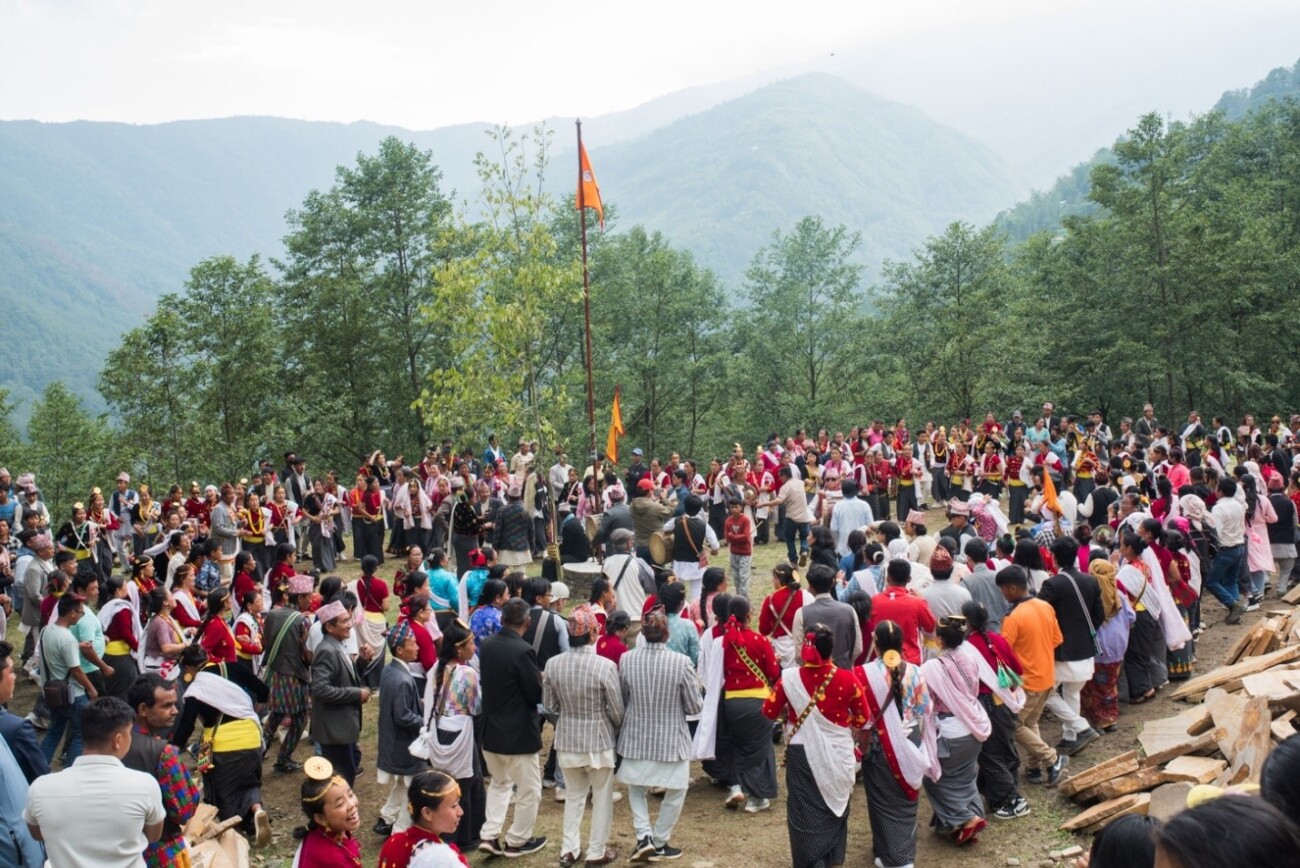
While the Janajati movement in Nepal has influenced identity politics in Sikkim and Darjeeling hills, especially given the porous nature of cultural and geopolitical borders between these places, the politics of indigeneity in the latter regions is also distinctive due to the overarching framework of the Indian nation-state.
The contemporary resurgence of Sakela Sili did not emerge in a socio-political vacuum but is embedded into the broader emergence of politics of indigeneity and the rise of indigenous consciousness across the Eastern Himalayas. In Nepal, the Kirat Rais today are legally recognised as one of the 59 (previously 61) communities considered ‘Indigenous’ through the National Foundation for Development of Indigenous Nationalities (NFDIN) Act of 2002. This has come with a longer historicity of demands for rights and recognitions within the Nepalese state articulated since the 1990s through the Janajati movement, whose demands mainly revolve around the creation of identity-based federal structure and local autonomy over land and resources as seen most prominently in the case of the demands for the creation of Limbuwan federal state in the ancestral homeland of Limbu (Yakthung) community in Eastern Nepal (Chettri, 2013). Similarly, the Kirat Rai in Nepal have demanded their ethnic homeland of Khambuwan in the ‘Majh’ (Middle) Kirat region of Eastern Nepal. As such, a key contention in the politics of indigeneity in Nepal is rooted in their marginalisation within the Brahmanical Nepalese state and the wider Hinduisation of Indigenous communities. The resurgence of the Sakela Sili dance in Nepal, often mobilised through cultural organisations like the Kirat Rai Yayokkha (KRY) established in 1990, can thus be situated within this broader politics of indigeneity and Indigenous self-determination of cultural and territorial rights.
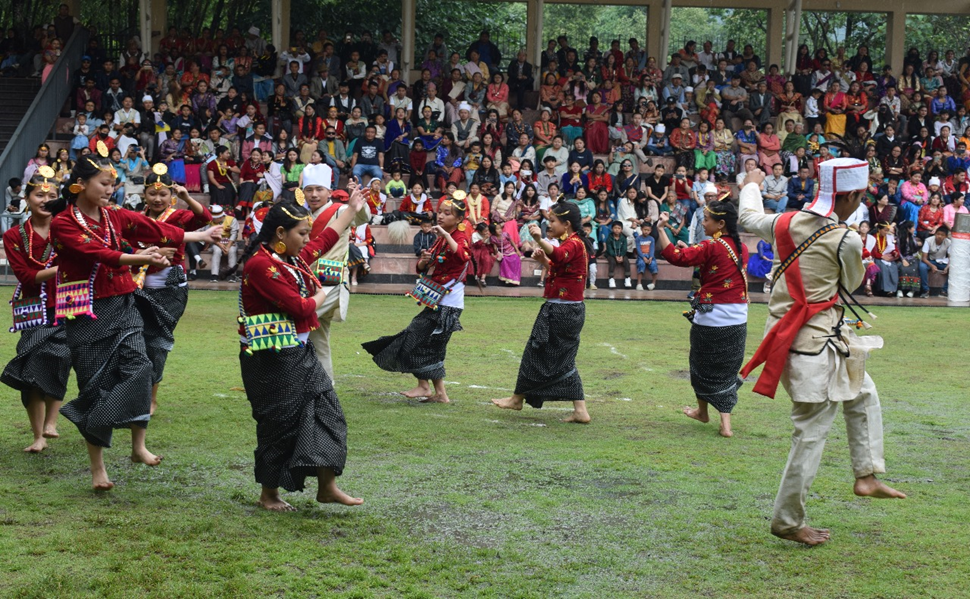
Photo: Milan Rai
While the Janajati movement in Nepal has influenced identity politics in Sikkim and Darjeeling hills, especially given the porous nature of cultural and geopolitical borders between these places, the politics of indigeneity in the latter regions is also distinctive due to the overarching framework of the Indian nation-state. In Sikkim, the Kirat Rai comprise approximately 14 percent of Sikkim’s total population and have been historically subsumed within the ‘Sikkimese-Nepali’ identity category. However, the distinctiveness of the Kirat Rai cultural identity in Sikkim existed historically and gained prominence since the 1960s even before the merger of Sikkim with India in 1975, formalised through the creation of cultural organisations like the Akhil Kirat Rai Sangh (AKRS) in 1990. Since then, the Sikkimese Rais have centred on the conservation and recognition of the Kirat Rai cultural identity in Sikkim through various initiatives, including the celebration of Sakela/Sakewa festivals and the re-introduction of Sakewa Sili. However, a key aspect in the reconstruction of Kirat Rai cultural identity in Sikkim is the wider demand for their recognition as ‘tribal’ through the Scheduled Tribe framework of the Indian Reservation System as in the case of other tribal communities of Northeast India (Vandenhelsken, 2021). This is because the ST governmental category enables rights to certain territorial and economic resources and state-sponsored preservation of cultural identity (Chettri, 2013), which is the key route to attaining Indigenous status in this context.
In this context of Sikkim-Darjeeling Himalaya, the notion of indigeneity is articulated through the postcolonial category of the ‘tribe’ (Debbarma, 2023), resulting from their marginalisation as borderland communities within the Indian nation-state.
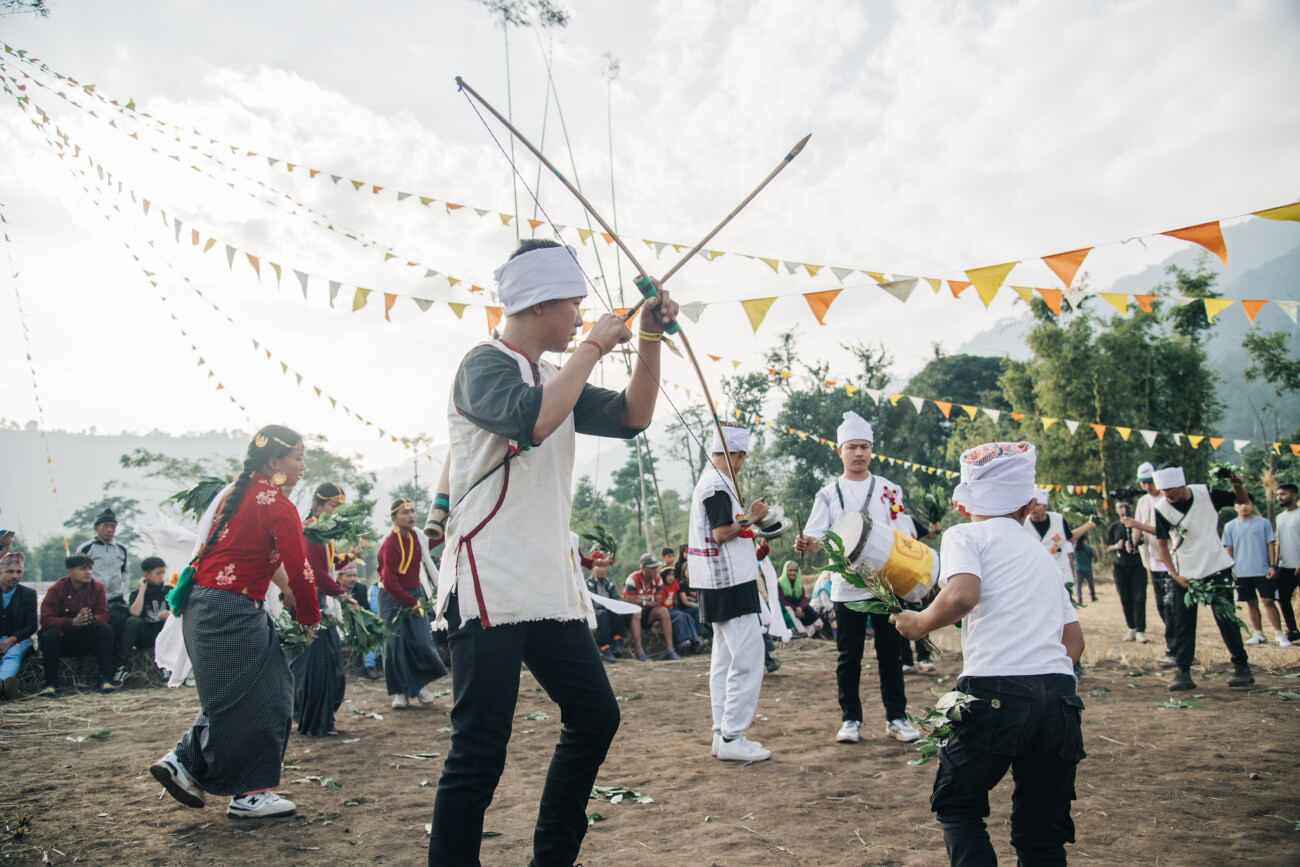
This ‘tribal turn’ in identity politics of Eastern Himalaya has inevitably informed articulations of indigeneity in Darjeeling Hills in the present-day Indian state of West Bengal along similar lines as Sikkim, albeit with a distinct historicity. Since the 1950s and particularly in the 1980s, the Darjeeling Hills witnessed wider political assertions through demands for the Gorkhaland federal state to represent the unified Nepali-speaking Gorkha population within the Indian Union (Chettri, 2013). However, in recent years, there has been an oscillation between demands for Gorkhaland and the resurgence of community-specific identity politics, reflected in the growing demands for recognition of their ‘tribal’ status within the Indian Reservation System, as in the case of Sikkim (Tamang and Kipgen, 2023). In this context, the Kirat Rais in Darjeeling Hills have mobilised their specific Kirati identity, particularly through the inception of Kirati Khambu Rai Sanskritik Sansthan (KKRSS) in 1994, aiming to preserve Kirati culture and language, which continues to work towards the aspiration of attaining Kirat Rai ‘tribal’ identity through the ‘Scheduled Tribe’ framework within the Indian nation-state (Rai, 2020). Thus, in this context of Sikkim-Darjeeling Himalaya, the notion of indigeneity is articulated through the postcolonial category of the ‘tribe’ (Debbarma, 2023), resulting from their marginalisation as borderland communities within the Indian nation-state.
‘Nativism’ and ‘Tribalism’: Situating Sakela Sili within the Politics of Indigeneity
The discourses of 'nativism' and 'tribalism' frame indigeneity in the region through a narrow lens of 'authenticity,' requiring a pure, distinctive pre-modern culture, such that for communities to be recognised as ‘Indigenous’ or ‘tribal’, we must prove the purity of our indigeneity by showcasing ‘authentic tribal cultural traits.’
The concept of 'indigeneity' in the Eastern Himalayas, particularly in Darjeeling and Sikkim, is complex and contentious, shaped by colonial discourses of 'nativism' and 'tribalism.' ‘Nativism’ emphasizes that being an 'original inhabitant' or having original ties to the land is crucial for attaining tribal-indigenous status. This notion, rooted in Indigenous movements in settler colonial contexts like the USA, Canada, and Australia, reflects the historical experiences of displacement and erasure faced by native communities in these places due to European colonization. In Nepal, the discourse of nativism resonates particularly with demands for federal autonomy and land rights for the Janajati communities, whose histories and relationship to land have been marginalized due to Nepal's internal colonization and cultural homogenization. However, in the context of Sikkim and Darjeeling Himalaya, where borders between India and Nepal are socio-culturally porous, the nativist discourse often leads to exclusionary practices, erasing the histories of mobilities of borderland communities like the Kirat Rai, with ancestral ties across the border in Eastern Nepal. Thus, as Grydehøj et al (2020) suggest, stepping outside one’s allocated Indigenous geography risks having one’s Indigenous identity deemed illegitimate, such that the postcolonial category of 'native' excludes the borderland communities like the Kirat Rai, leading to the denial of their indigeneity due to the absoluteness of national geo-political borders in defining nativism in this context.
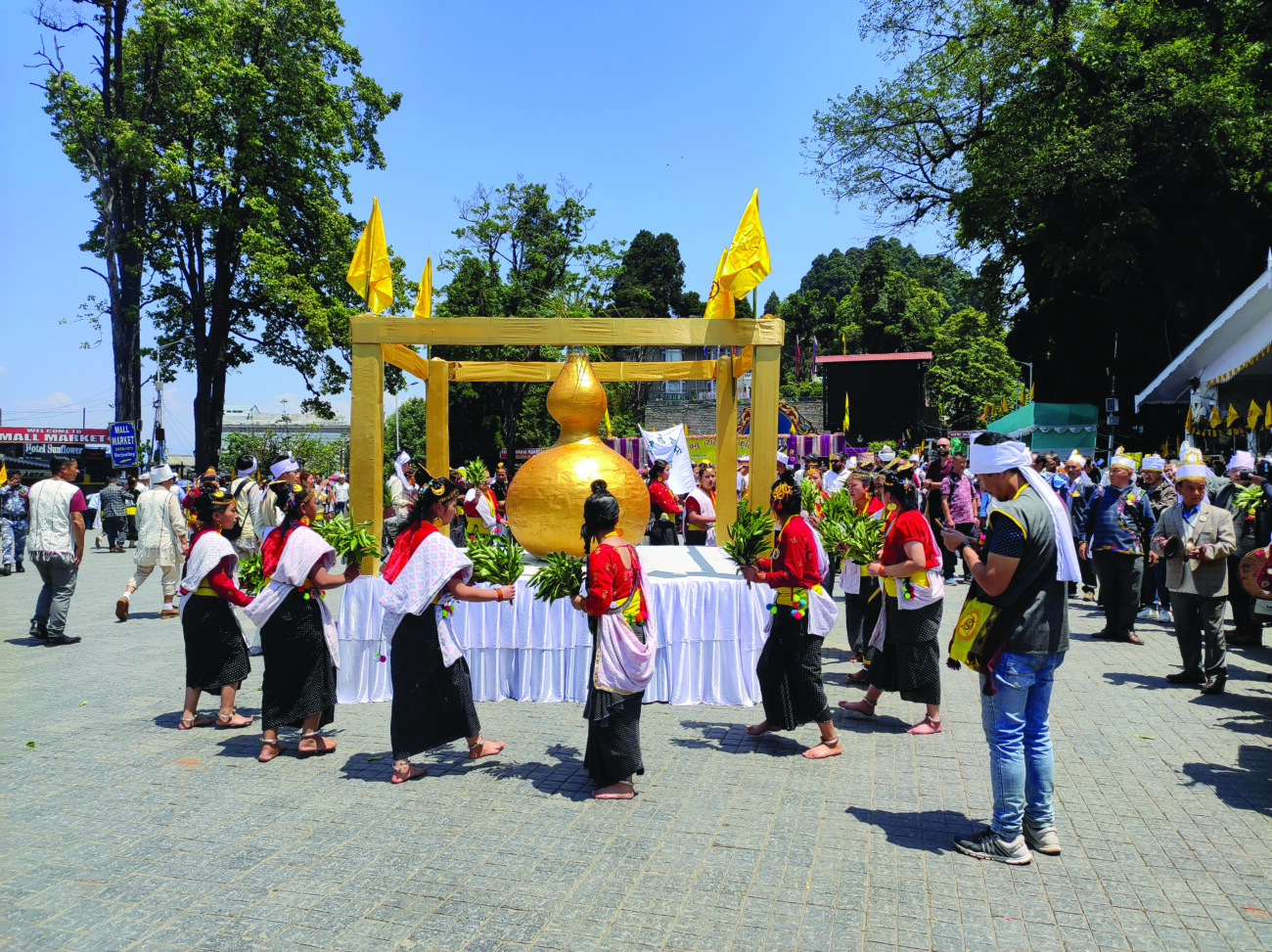
Credit: Amitava Banerjee (FirstPost)
In 2014, the Indian government rejected the demands for Scheduled Tribe status for 11 Nepali-speaking communities from Sikkim and Darjeeling, including the Kirat Rai, because their assimilation into caste Hindu culture was a reason for their lack of distinctiveness as a 'tribe’ (Bhutia, 2022).
Similarly, ‘tribalism’ is another dominant discourse shaping the politics of indigeneity in the Eastern Himalayas. Rooted in the colonial notion of 'primitive inertia' that positions indigenous communities in the past (Teves, 2020), the discourse of tribalism frames Indigenous communities as 'backward' and culturally distinct from the 'civilised' caste Hindus of India's plains. This discourse locates 'tribes' in a deficit, on the verge of extinction, and characterised by ‘backward traits’, which continues to influence the Indian Reservation System’s definition of Scheduled Tribes, which uses colonial racialised language in defining who is 'tribal' and, therefore, who can be considered 'indigenous.' Since the Kirat Rai in Sikkim and Darjeeling, like those in Nepal, have historically undergone processes of Hinduisation, assimilating many dominant Hindu-Nepali customs, this cultural assimilation complicates their demands for tribal recognition, often leading to the state's rejection of such demands. For example, in 2014, the Indian government rejected the demands for Scheduled Tribe status for 11 Nepali-speaking communities from Sikkim and Darjeeling, including the Kirat Rai, because their assimilation into caste Hindu culture was a reason for their lack of distinctiveness as a 'tribe’ (Bhutia, 2022).
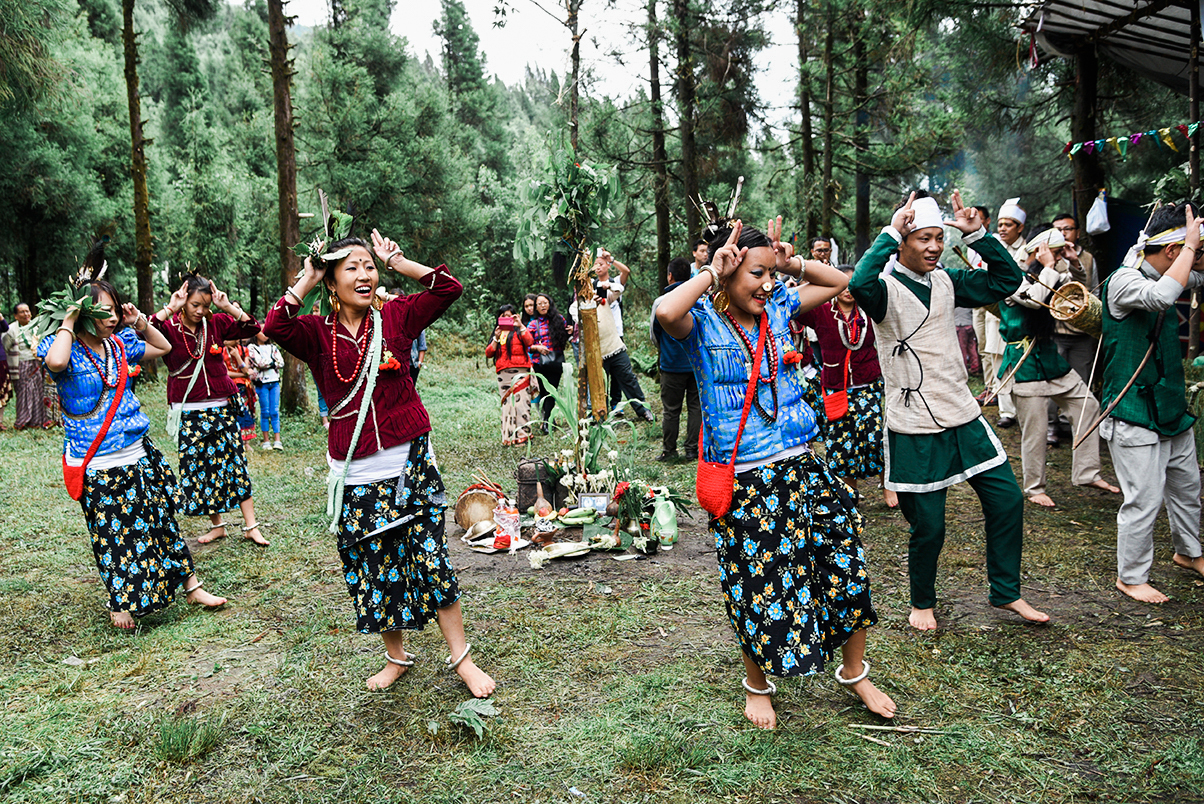
The resurgence of the Sakela Sili dance in this context can be seen as a key cultural expression in the struggle for recognition as Scheduled Tribes, where the dance serves as a signifier of an 'authentic' tribal identity and plays a vital role as a tool of representation (Shay, 2023) in the broader Indigenous identity politics of the region.
The discourses of 'nativism' and 'tribalism' frame indigeneity in the region through a narrow lens of 'authenticity,' requiring a pure, distinctive pre-modern culture, such that for communities to be recognised as ‘indigenous’ or ‘tribal’, we must prove the purity of our indigeneity by showcasing ‘authentic tribal cultural traits.’ Thus, in response to these dominant discourses, the Kirat Rai and certain Nepali-speaking communities in Sikkim-Darjeeling Himalaya have begun to actively reject dominant Hindu-Nepali practices, instead emphasising their cultural distinctiveness as 'tribal-indigenous' by reviving their ancestral animistic practices. However, this effort often falls into the trap of 'authenticity,' with communities attempting to prove their indigeneity through traditional attires, songs, and dances, which can lead to cultural exhibitionism and self-exoticisation. Therefore, the resurgence of the Sakela Sili dance in this context can be seen as a key cultural expression in the struggle for recognition as Scheduled Tribes, where the dance serves as a signifier of an 'authentic' tribal identity and plays a vital role as a tool of representation (Shay, 2023) in the broader Indigenous identity politics of the region.
Beyond ‘authenticity’: Sakela Sili as a performative ‘World-Making’ praxis
This concept of world-making suggests that the world is continuously created and sustained through actions and imagination, thus creating new meanings, identities, and realities (Monteiro, 2022).
Following Indigenous dance scholarship that emphasises Indigenous epistemologies, I argue that the Sakela Sili dance, rooted in relational epistemology, can be understood as a symbolic representation tool in Indigenous identity politics and as a performative praxis that engages in ‘world-making’. This concept of world-making suggests that the world is continuously created and sustained through actions and imagination, thus creating new meanings, identities, and realities (Monteiro, 2022). Viewing Sakela Sili through this lens allows us to see it as a dynamic process that challenges dominant postcolonial paradigms and opens new ways of imagining the Eastern Himalaya. Sakela Sili embodies the Kirati epistemology of relationality, deeply embedded in the oral tradition of Mundhum, which perceives the world as an interconnected network of human and non-human entities, holding sacred connections with nature and ancestral spirits. The Sili (dance movements) mimic animals and birds of the Himalayas, symbolising the deep ties between humans and the natural world. The cyclical nature of the dance, performed during key seasonal transitions like Sakela Ubhauli (spring) and Udhauli (winter), reflects this dance as a form of world-making that constructs a "relational reality" rooted in interconnectedness and kinship (Tynan, 2021).

Photo: Praveen Chettri
The dance symbolizes the fluidity of the Eastern Himalayas, where geographical and cultural borders are not rigid but permeable, signified by the migratory birds depicted in the dance that traverse the Himalayas.
From this perspective, Sakela Sili can be seen as an embodied praxis of creating and enacting new realities, meanings, and identities around indigeneity in the Eastern Himalayan region. Its resurgence across national borders of states like Nepal and India underscores its transborder character, which resists the rigid (post)colonial borders and reimagines the Himalayan region through the lens of connections and relationships. This is particularly relevant as the dance symbolizes the fluidity of the Eastern Himalayas, where geographical and cultural borders are not rigid but permeable, signified by the migratory birds depicted in the dance that traverse the Himalayas. This transborder flow of Sakela Sili acts as a form of resistance against colonial and nationalist cartographies, challenging the conventional postcolonial framework that views the region as a ‘borderland’. The dance fosters an imaginative geography that reflects the histories of mobility and interconnectedness among transborder communities, serving as "counter-maps" that subvert and challenge hegemonic narratives and work to decolonise parts of our cartographically colonised minds (Oslender, 2021: 2).
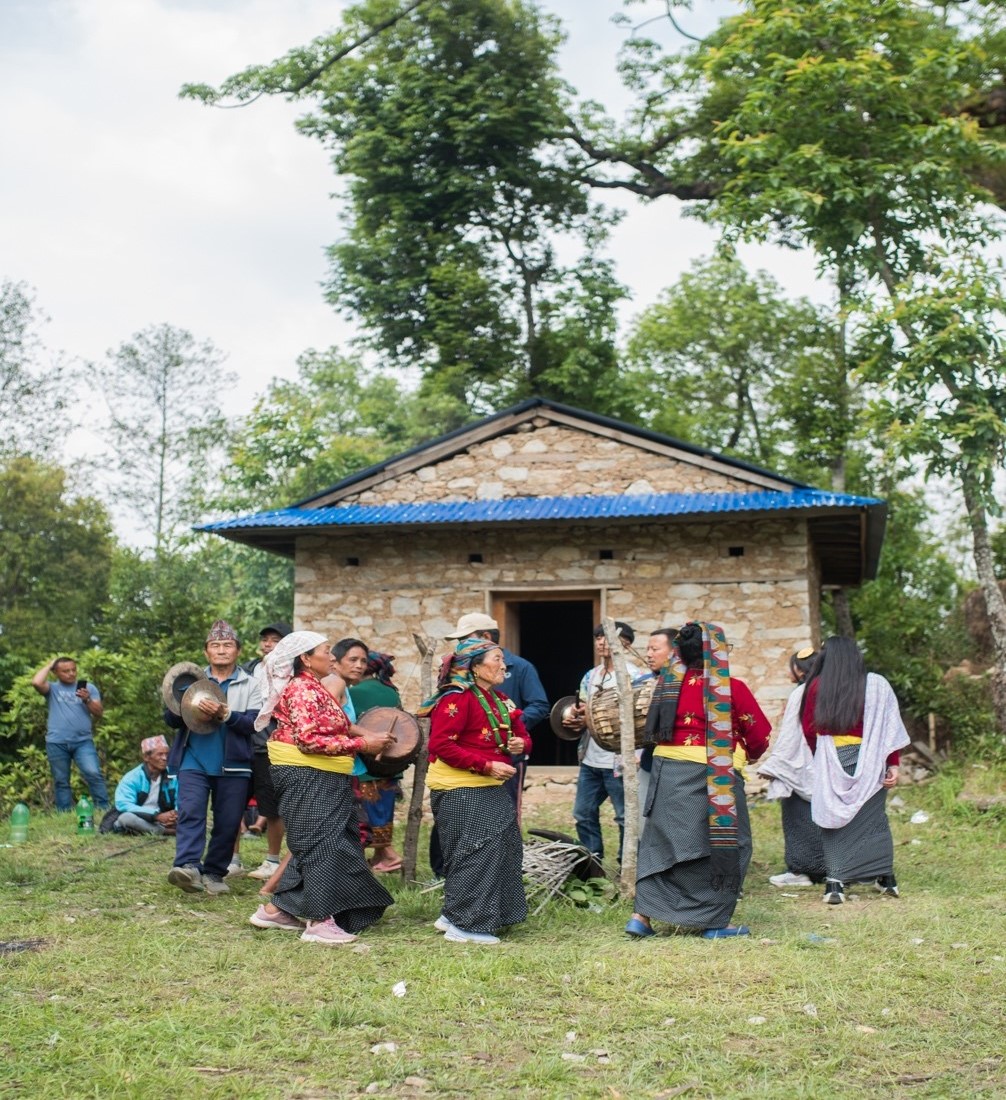
Photo by Yawan Rai
Understanding Sakela Sili as a world-making process shifts the focus from viewing it as a static ‘tradition’ of the past to recognising it as an active and living ‘art form’ that connects the past, present, and future.
Moreover, understanding Sakela Sili as a world-making process shifts the focus from viewing it as a static ‘tradition’ of the past to recognising it as an active and living ‘art form’ that connects the past, present, and future. This is particularly reflected in the contemporary resurgence of Sakela Sili dance in diverse contemporary contexts, ranging from festivals and cultural events to social media platforms. Here, the dance form is not simply a traditional practice being ‘revived’ but a fluid cultural form in constant interplay, signalling indigenous performativity’s ability to create, modify, alter, and revive practices as a form of survivance. In this sense, like our ancestors, contemporary practitioners of Sakela Sili must be seen not merely as ‘culture bearers’ but as ‘culture creators’ (Wakpa, 2016), embodying resilience, agency, and transformation in the creation of indigenous identities. This perspective, therefore, critiques the notion of ‘pure’ indigeneity and moves away from discourses of ‘authenticity,’ ‘loss’, and ‘revivalism,’ instead highlighting the dynamic and transformative nature of Indigenous cultural practices (Teves, 2020). Thus, viewing Sakela Sili as a ‘world-making’ praxis offers a non-essentialist, relational understanding of indigeneity in the Eastern Himalayas, moving beyond the rigid epistemologies of 'borders’ and ‘authenticity’ to a worldview of interconnectedness, fluidity, and transformation.
Re-thinking Himalayan indigeneity
This dance embodies a relational understanding of indigeneity in the transborder Eastern Himalayas, emphasising that indigeneity is not about recovering a pre-modern past or proving authenticity but an ongoing process of creation and transformation.
The resurgence of Sakela Sili dance in the Eastern Himalaya reflects the growing politics of indigeneity in the region, highlighting the role of dance in asserting Indigenous identity politics. Sakela Sili reveals the complexities of indigeneity in a borderland area intersected by multiple nation-states, challenging the dominant ‘nativist’ and ‘tribalist’ discourses that shape what it means to be ‘indigenous’ in the region. This essay argues that Sakela Sili should be understood not only as a representational tool in identity politics but as a ‘world-making’ praxis, which allows for a rethinking of indigeneity in the contemporary Himalayan context. Instead of viewing indigeneity as static tied to notions of ‘authenticity,’ Sakela Sili demonstrates that indigeneity is dynamic, processual, and performative—a way of ‘doing’ rather than ‘being.’ This dance embodies a relational understanding of indigeneity in the transborder Eastern Himalayas, emphasising that indigeneity is not about recovering a pre-modern past or proving authenticity but an ongoing process of creation and transformation. Dancing Sakela Sili brings indigeneity into existence; continuously shaping and sustaining it through embodied actions.
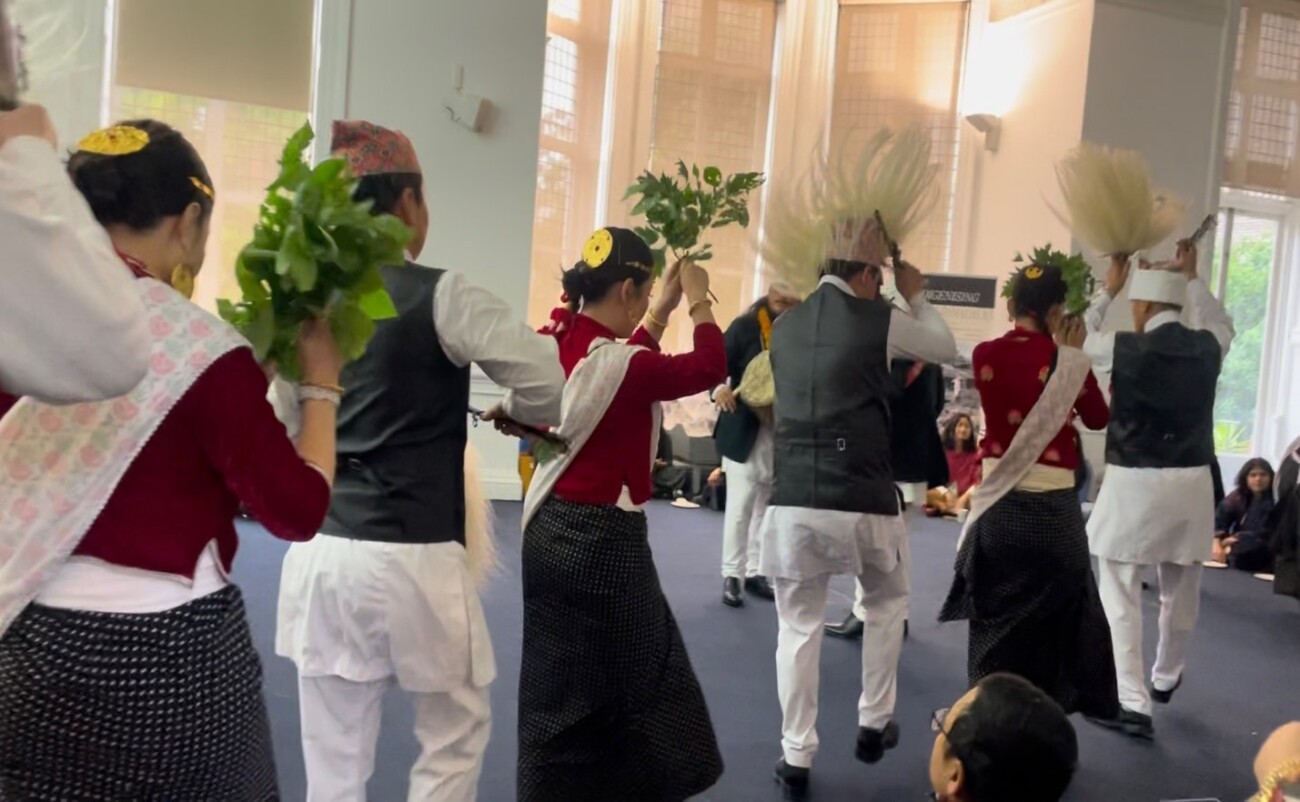
Photo: Anusha Rai
References
Bhutia, S.P. (2022) Sikkim, Darj MPs puts major points on tribal status of 12 Gorkha communities strongly demands tribal status, Sikkim Breaking News | News From Sikkim.
Chettri, M., 2013. Ethnic politics in the Nepali public sphere: three cases from the eastern Himalaya (Doctoral dissertation, SOAS, University of London).
Debbarma, R.K., 2022. Indigeneity. In The Routledge Companion to Northeast India (pp. 250-255). Routledge India.
Grydehøj, A., Nadarajah, Y. and Markussen, U., 2020. Islands of indigeneity: Cultural distinction, indigenous territory and island spatiality. Area, 52(1), pp.14-22.
Monteiro, A., 2022. A riverside tale: anti-colonial worldmaking in dance through Amazonian storytelling (Doctoral dissertation).
Murphy, J.S., 2007. The people have never stopped dancing: Native American modern dance histories. U of Minnesota Press.
Oslender, U., 2021. Decolonizing cartography and ontological conflict: Counter-mapping in Colombia and “cartographies otherwise”. Political Geography, 89, p.102444.
Rai, S., 2020. Roots and routes of tribalism: a study of the Kirati Khambu Rai community of Darjeeling Hills (Doctoral dissertation, University of North Bengal).
Shay, A., 2023. Folk Dance and the Creation of National Identities: Staging the Folk. Springer Nature.
Tamang, S. and Kipgen, N., 2023. ‘Land’ as a site of contestation: Empire, identity, and belonging in the Darjeeling Himalayas. Ethnicities, 23(2), pp.213-234.
Teves, S.N., 2020. Indigeneity and performance. In Routledge Handbook of Critical Indigenous Studies (pp. 479-487). Routledge.
Tynan, L., 2021. What is relationality? Indigenous knowledges, practices and responsibilities with kin. cultural geographies, 28(4), pp.597-610.
Vandenhelsken, M., 2021. Ancestrality, migration, rights and exclusion: citizenship in the Indian state of Sikkim. Asian Ethnicity, 22(2), pp.213-234.
Wakpa, T.B., 2016. Culture Creators and Interconnected Individualism: Rulan Tangen and Anne Pesata's Basket Weaving Dance. Dance Research Journal, 48(1), pp.107-125.
Wettstein, M., 2019. YouTube and the rising trend of Indigenous folk dance: the case of the sakela dance of the Rai in Nepal and their diaspora. In Media, indigeneity and nation in South Asia (pp. 213-228). Routledge.
[1] Sakela/ Sakewa Ubhauli is celebrated for 15 days in Baisakh (April-May) at the start of the farming year
[2] Sakela/ Sakewa Udhauli is celebrated in Mangsir (November-December) during the harvest season
Dr Rohini Rai (she/her) is an interdisciplinary scholar of ‘race’, migration, and racism with a keen interest in postcolonial and decolonial theories. She teaches Sociology at Brunel University London and is currently researching ‘race’, racialisation, and racism in the UK (Himalayan and Nepali diaspora) and South Asia (Northeast India and Eastern Himalaya). She is also interested in creative approaches and community engagement.
This essay stems from a British Academy-funded project titled Indigenising the Himalayas: Reimagining its Past, Present, and Futures, led by Dr Rohini Rai (Brunel University London) in collaboration with the Royal Geographical Society (with the Institute of British Geographers). The project focuses on three key elements: archives, dance, and storytelling.
This collaborative project was developed in close partnership with three UK-based Himalayan Indigenous diaspora community organisations: Kirat Yakthung Chumlung (KYC Ashford, UK), Kirat Rai Yayokkha (KRY Ashford, UK) and World Newah Organization UK Chapter (WNOUK)

